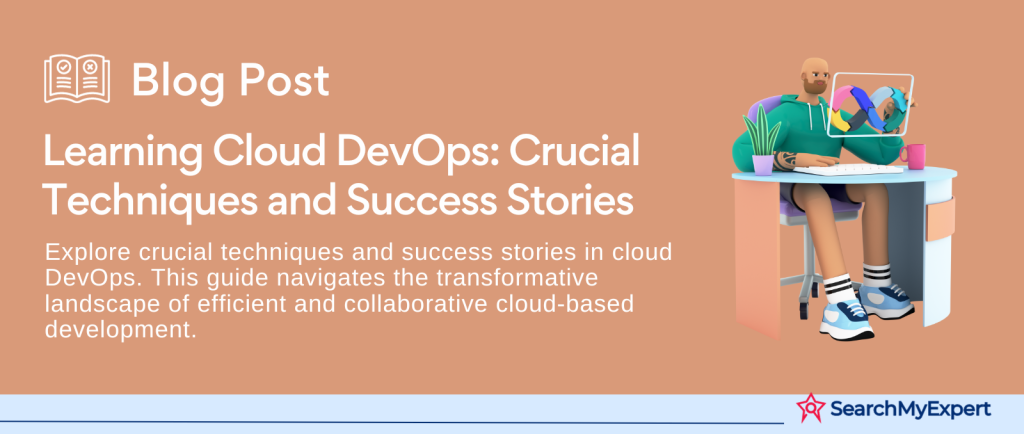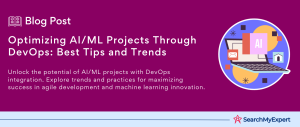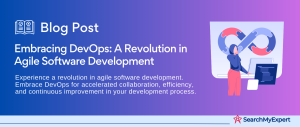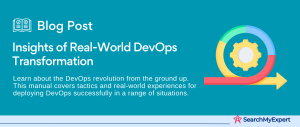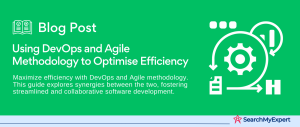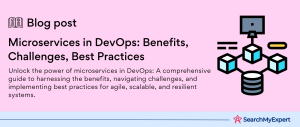Defining DevOps: Understanding its Core Principles
DevOps stands as a pivotal methodology in the realm of software development and IT operations, aiming to bridge the gap between software development (Dev) and IT operations (Ops). At its core, DevOps is more than just a set of practices; it’s a culture, a philosophy that fosters collaboration, communication, and integration between developers and IT professionals. This synergy is crucial in achieving more efficient, faster, and reliable software delivery and deployment.
The core principles of DevOps revolve around several key aspects:
- Continuous Integration and Continuous Deployment (CI/CD): This principle emphasizes the importance of automating the integration of code changes from multiple contributors into a single software project, and automating the software delivery process.
- Automated Testing:
Ensuring that every change made to the code is tested automatically, reducing the chances of bugs and errors in the final product. - Collaboration and Communication:
Encouraging open and transparent communication between development and operations teams to foster a more cohesive work environment. - Rapid Feedback and Iteration: Implementing a feedback loop from operations to development, ensuring that any issues are addressed promptly and improvements are continuously made.
Challenges and Opportunities in Cloud Environments for DevOps
When implementing DevOps in cloud environments, unique challenges and opportunities arise:
Challenges:
- Security and Compliance:
Ensuring security and compliance in a cloud environment is complex due to the shared responsibility model and the dynamic nature of cloud services. - Managing Multi-Cloud Environments: The need to manage and operate across various cloud platforms can be challenging, requiring specialized skills and tools.
Opportunities:
- Scalability:
The cloud offers unmatched scalability, allowing DevOps teams to scale resources up or down as needed. - Flexibility and Innovation: Cloud environments provide the flexibility to experiment and innovate rapidly, enabling teams to test new ideas and deploy applications quickly.
Benefits of Implementing DevOps in the Cloud
The integration of DevOps in cloud environments brings forth several benefits:
- Increased Agility:
The combination of DevOps and cloud computing allows businesses to be more agile, adapting quickly to market changes and customer needs. - Scalability:
Cloud environments provide the ability to scale resources as per the demand, which is crucial for DevOps practices that require quick adjustments in resource allocation. - Cost Efficiency:
With cloud computing, organizations can optimize costs by paying only for the resources they use. This cost efficiency is enhanced with DevOps practices that streamline operations and reduce waste. - Improved Collaboration:
Cloud platforms offer tools that enhance collaboration across teams, essential for the DevOps culture of shared responsibility and continuous improvement. - Enhanced Innovation:
The agility and speed of cloud environments, combined with DevOps practices, enable faster innovation cycles, allowing businesses to bring new features and products to market quickly.
Infrastructure as Code (IaC): Revolutionizing Cloud DevOps
Infrastructure as Code (IaC) stands as a transformative concept in the world of cloud DevOps. It refers to the practice of managing and provisioning computing infrastructure through machine-readable definition files, rather than physical hardware configuration or interactive configuration tools. IaC is a key enabler in the DevOps paradigm, allowing for the automation, consistency, and repeatability of infrastructure deployment and management.
Role of IaC in Cloud DevOps
IaC plays a critical role in enhancing cloud DevOps practices:
- Automation: Automates the deployment of infrastructure, thereby reducing manual processes and the potential for human error.
- Version Control: Allows infrastructure to be versioned and treated like any other code, enabling tracking of changes and rollbacks if needed.
- Consistency and Standardization:
Ensures a consistent environment is deployed every time, eliminating the “it works on my machine” problem. - Speed and Efficiency:
Accelerates the process of infrastructure deployment, enabling rapid scaling and faster time-to-market for applications.
Exploring Popular IaC Tools: Terraform, Ansible, and CloudFormation
Several IaC tools have emerged as popular choices in the cloud DevOps ecosystem:
- Terraform: An open-source IaC tool by HashiCorp, Terraform enables users to define and provide data center infrastructure using a declarative configuration language. It is known for its ability to manage both cloud and on-premises resources.
- Ansible: Primarily an automation tool, Ansible can also be used as an IaC tool. It uses YAML syntax for its playbooks (scripts) and is widely appreciated for its simplicity and agentless architecture.
- AWS CloudFormation: A service offered by AWS, CloudFormation provides a common language for describing and provisioning all the infrastructure resources in the cloud environment. It is particularly effective within AWS ecosystems.
Demonstrating IaC in Action: Automating Infrastructure
The implementation of IaC automates several key aspects of infrastructure management:
- Provisioning: Automatically sets up servers, storage, and networking components, reducing the time and effort required for manual provisioning.
- Configuration:
Ensures that every instance of the infrastructure is configured identically, eliminating discrepancies between environments. - Management:
Simplifies the management of infrastructure by treating it as code. Changes can be made swiftly and consistently across the entire infrastructure. - Scalability and Resilience: Facilitates easy scaling of infrastructure to meet demand and enhances the resilience of systems by allowing for quick recovery from failures.
Continuous Integration and Continuous Delivery (CI/CD): Streamlining Development in the Cloud
Continuous Integration (CI) and Continuous Delivery (CD) form the backbone of modern software development practices, especially in cloud-based environments. CI/CD pipelines enable developers to frequently merge code changes into a central repository, where automated builds and tests are run. Continuous Delivery extends this to ensure that the software can be released to production at any time, with the push of a button.
Defining CI/CD Pipeline Stages and Their Functions
A typical CI/CD pipeline consists of several stages, each with its distinct role:
- Source Stage: This is where the process begins. Developers commit code changes to a version control system like Git, triggering the CI/CD pipeline.
- Build Stage:
The code is compiled or packaged into a runnable form. This stage might involve compiling source code into binary code, packaging that code, and creating Docker images. - Test Stage: Automated tests are run to validate the functionality and performance of the code. This includes unit tests, integration tests, and other forms of automated testing.
- Deploy Stage:
In Continuous Delivery, this stage involves automatically deploying the application into a production-like environment for further testing. - Release Stage:
The final step in Continuous Delivery, where the application is released into the production environment. This might be automated or require manual approval. - Monitoring and Feedback:
Post-deployment, the application is monitored. Feedback is collected for future improvements.
Essential CI/CD Tools: Jenkins, GitLab CI/CD, and Travis CI
Several tools have emerged as staples in CI/CD practices:
- Jenkins: An open-source automation server, Jenkins facilitates continuous integration and delivery. It’s highly customizable with a vast plugin ecosystem.
- GitLab CI/CD: Integrated into the GitLab platform, this tool provides a seamless experience for managing the CI/CD pipeline along with the code repository.
- Travis CI: A cloud-based CI service, Travis CI is known for its ease of use and integration with GitHub, automatically testing software upon every commit.
CI/CD in Cloud Environments: Accelerating Deployment and Testing
CI/CD pipelines integrate seamlessly with cloud environments, offering several advantages:
- Scalability: Cloud environments can dynamically allocate resources to handle the load of building, testing, and deploying applications, accommodating spikes in demand.
- Flexibility: Developers can leverage a variety of cloud services and tools to optimize their CI/CD pipelines, such as container orchestration systems and serverless computing platforms.
- Speed:
The cloud’s on-demand nature allows for quicker provisioning of resources, leading to faster builds, tests, and deployments. - Automated Testing: Cloud environments enable comprehensive automated testing scenarios, including load testing, which might be resource-intensive.
- Reliability: Cloud platforms offer high availability and redundancy, ensuring the CI/CD process is always up and running.
Configuration Management: Ensuring Consistency in Cloud Infrastructure
Configuration management is a critical component of the DevOps process, particularly in cloud environments. It involves maintaining computer systems, servers, and software in a desired, consistent state. It’s a key practice for system administrators, network administrators, and DevOps practitioners, enabling the management of a large number of servers efficiently and predictably.
Core Configuration Management Tools: Chef, Puppet, and SaltStack
Several tools have gained prominence in the field of configuration management, each with unique features:
- Chef: Chef is an open-source configuration management tool that uses Ruby-based recipes to automate infrastructure provisioning and configuration. It’s known for its strong community support and ability to manage both on-premises and cloud environments effectively.
- Puppet: Puppet, another popular tool, uses a declarative language to specify system configuration. It’s highly scalable and can be used to manage numerous systems. Puppet is often noted for its comprehensive reporting capabilities and a robust ecosystem.
- SaltStack (now Salt Project):
SaltStack is a Python-based, open-source configuration management tool that excels in high-speed data collection and execution. Its unique approach is based on remote execution, making it particularly effective for managing complex, heterogeneous environments.
Ensuring Consistency and Compliance Across Cloud Infrastructure
Configuration management tools play a vital role in maintaining consistency and compliance:
- Automated Configuration:
These tools automate the process of configuring servers, ensuring every server is set up identically, and reducing errors and discrepancies. - Version Control of Configurations: Configuration changes are tracked and version-controlled, allowing easy rollback to a previous configuration if needed.
- Compliance Monitoring:
Regular checks can be performed to ensure that systems are in compliance with company policies and regulatory standards. - Infrastructure as Code: These tools enable the practice of Infrastructure as Code, making it easier to manage and provision resources in the cloud.
Integrating Configuration Management into CI/CD Pipelines
Configuration management tools can be seamlessly integrated into CI/CD pipelines:
- Automated Environment Setup: These tools can automatically set up and configure environments needed for each stage of the CI/CD pipeline.
- Consistent Testing Environments:
They ensure that the testing environments are configured exactly like the production environment, reducing the “works on my machine” problem. - Efficient Deployment:
During the deployment stage, configuration management tools can be used to roll out changes to the server configuration, ensuring that the application runs in the intended environment. - Post-Deployment Management: After deployment, these tools help in maintaining and updating the configurations, ensuring the infrastructure remains in the desired state.
Monitoring and Observability in Cloud Environments: Essential for Operational Excellence
In the dynamic and complex world of cloud computing, monitoring and observability are indispensable practices. They involve tracking the performance of applications, infrastructure, and services, providing insights into their health and behavior. This is crucial for identifying and resolving issues promptly, ensuring optimal performance and availability.
The Importance of Monitoring and Observability
Monitoring and observability in cloud environments serve several critical functions:
- Performance Management:
They help in tracking the performance of applications and infrastructure, ensuring they meet the expected service levels. - Proactive Issue Identification: Through continuous monitoring, issues can be identified and addressed before they impact users.
- Resource Optimization: They enable the efficient use of cloud resources by providing insights into usage patterns and identifying underutilized resources.
- Compliance and Security:
Monitoring tools can detect security breaches and ensure compliance with various regulatory standards. - Data-Driven Decision-Making:
Observability provides deep insights into the system, aiding in informed decision-making and strategic planning.
Exploring Popular Monitoring Tools: Prometheus, Grafana, and New Relic
Several tools have become popular for monitoring and observability in cloud environments:
- Prometheus:
An open-source monitoring solution, Prometheus is known for its powerful querying language and the ability to handle multi-dimensional data like metrics. It’s particularly effective for monitoring and alerting in cloud-native environments. - Grafana: Grafana is an open-source platform for analytics and interactive visualization. It is widely used for visualizing time series data, and integrating with various data sources including Prometheus.
- New Relic:
New Relic offers a comprehensive cloud-based observability platform. It is known for its ability to provide real-time insights into the performance of applications, infrastructure, and customer experience.
Real-Time Insights with Monitoring Tools
These monitoring tools provide crucial real-time insights:
- Application Performance:
They track key performance indicators of applications, such as response times, error rates, and throughput. - Resource Utilization: Insights into how cloud resources are being used, helping in capacity planning and cost optimization.
- Error and Log Analysis:
Ability to analyze logs and errors in real-time, aiding in quick debugging and resolution of issues. - Customizable Alerts: Setting up customizable alerts based on specific metrics or events, ensuring prompt response to potential issues.
- Visual Dashboards: Offering interactive dashboards that provide a comprehensive view of the system’s health and performance.
Security and Compliance in Cloud DevOps: Safeguarding Digital Assets
In the realm of cloud computing, security, and compliance are paramount, especially when implementing DevOps practices. The dynamic and automated nature of DevOps, while boosting efficiency and speed, also brings forth unique security challenges. Addressing these considerations is crucial for protecting sensitive data and ensuring regulatory compliance.
Security Considerations in Cloud DevOps Practices
Security in cloud DevOps encompasses several key areas:
- Access Control:
Ensuring that only authorized personnel have access to specific resources in the cloud environment. - Data Security:
Protecting data at rest and in transit from unauthorized access and breaches. - Compliance:
Adhering to various regulatory and legal requirements specific to industries and regions. - Threat Detection and Management: Identifying and responding to cybersecurity threats in a timely manner.
- Secure Coding Practices:
Integrating security into the software development life cycle to prevent vulnerabilities.
Cloud Security Tools and Services
Major cloud providers offer a range of security tools and services:
- AWS Identity and Access Management (IAM): AWS IAM allows the management of access to AWS services and resources securely. It enables the creation and management of AWS users and groups, and the use of permissions to allow and deny their access to AWS resources.
- Azure Active Directory (Azure AD):
Azure AD is Microsoft’s cloud-based identity and access management service, helping employees sign in and access resources. - Google Cloud Platform IAM (GCP IAM):
Similar to AWS IAM, GCP IAM provides resource access control across all Google Cloud services, ensuring only authorized users can access specific resources.
Integrating Security Practices into CI/CD Pipelines and Configuration Management
Security in CI/CD Pipelines:
- Automated Security Scanning:
Integrating tools like SAST (Static Application Security Testing) and DAST (Dynamic Application Security Testing) into the pipeline for automated code and application scanning. - Dependency Scanning: Automatically scanning dependencies for known vulnerabilities.
- Compliance Checks: Ensuring the code complies with security policies before deployment.
- Secure Artifact Repositories: Using secure repositories to store build artifacts.
Security in Configuration Management:
- Infrastructure as Code Security:
Ensuring that the IaC scripts themselves are secure and free of vulnerabilities. - Automated Compliance Checks:
Implementing tools to automatically check configurations against compliance standards. - Encryption and Key Management:
Managing keys and certificates securely in the configuration management process.
Best Practices for Implementing DevOps in Cloud Environments
Implementing DevOps in cloud environments requires a strategic approach to ensure success. Here are some best practices that have proven effective:
- Embrace a Culture of Collaboration:
Foster a culture where development and operations teams work closely together. Encourage open communication and knowledge sharing. - Implement Automation: Automate as many processes as possible, from code integration, and testing, to deployment, to minimize human errors and accelerate workflows.
- Utilize Microservices Architecture:
Adopt microservices to make applications more scalable and easier to deploy and update. - Prioritize Security:
Embed security practices (DevSecOps) into the DevOps pipeline. Conduct regular security audits and compliance checks. - Continuous Monitoring and Feedback: Implement monitoring tools for real-time insights and feedback for continuous improvement.
- Choose the Right Tools: Select tools that align with your organization’s needs and integrate well with your existing systems.
- Scalability and Flexibility:
Ensure your DevOps practices and tools can scale and adapt to changing requirements. - Invest in Training and Development: Continuously educate your team on the latest DevOps trends and technologies.
Case Studies: Success Stories in Cloud DevOps
Several companies have successfully leveraged cloud DevOps:
- Netflix:
A pioneer in using DevOps in the cloud, Netflix has created a highly efficient deployment process, enabling thousands of deployments per day without disrupting service. - Amazon:
Utilizes AWS extensively for its operations, employing DevOps practices for rapid development and deployment, significantly reducing downtime and improving customer experience. - Etsy: Known for its DevOps transformation, Etsy adopted continuous integration and delivery to improve efficiency and reduce the time-to-market for new features.
Resources for Further Learning and Exploration
For those interested in delving deeper into cloud DevOps, the following resources are invaluable:
Books:
- “The Phoenix Project” by Gene Kim, Kevin Behr, and George Spafford.
- “Accelerate The Science of Lean Software and DevOps” by Nicole Forsgren, Jez Humble, and Gene Kim.
Online Courses:
- Coursera and Udemy offer courses on DevOps practices, tools, and cloud integration.
- AWS, Azure, and Google Cloud certifications and training programs.
Blogs and Websites:
- The DevOps Institute offers insights and updates on DevOps trends.
- AWS, Azure, and GCP blogs provide case studies and best practices.
Community Forums and Conferences:
- DevOps conferences like DevOpsDays and GitHub Universe.
- Online forums like Stack Overflow and the DevOps subreddit for community support and discussions.
Conclusion:
The integration of DevOps practices in cloud environments represents a significant evolution in the way organizations develop, deploy, and manage software. From embracing Infrastructure as Code and robust CI/CD pipelines to prioritizing security and compliance, the practices outlined provide a roadmap for success in the dynamic world of cloud computing.
Success stories from leading companies like Netflix, Amazon, and Etsy highlight the transformative power of cloud DevOps in achieving unparalleled agility, efficiency, and scalability. They serve as a testament to the potential gains in productivity and innovation that organizations can achieve.
Bring efficiency and innovation to your IT with our DevOps Services.
Table of Contents
Toggle
